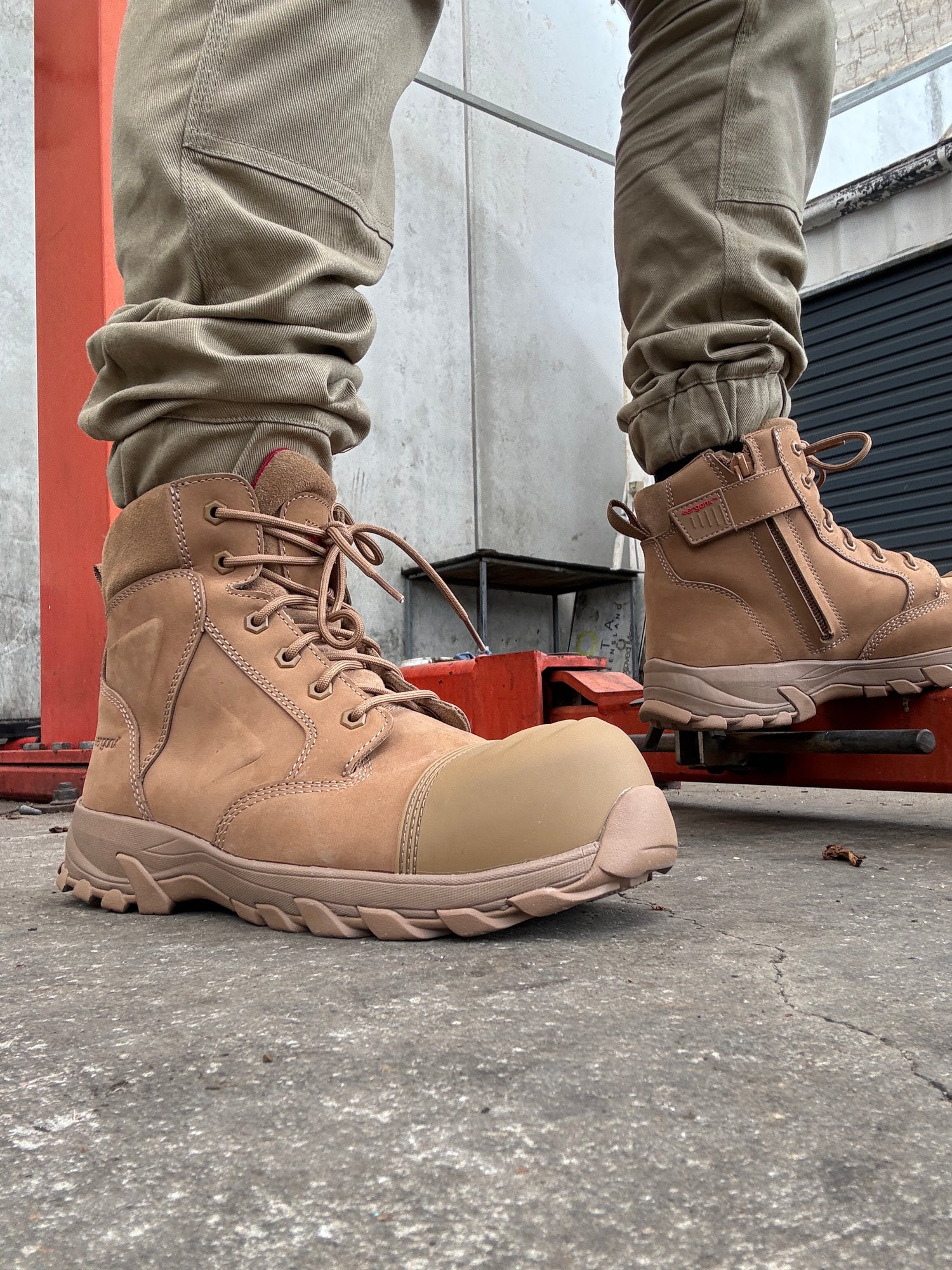Work boots for plantar fasciitis and heel pain
HOME / FOOTWEAR/ WORK BOOTS FOR PLANTAR FASCIITIS
Finding comfortable work boots can be quite a challenge. There are so many colors, materials, builds and fits to choose from. You might need a work boot that has some key features (e.g. protection, waterproof, electrical resistance) based on where you will be wearing them. If you will be wearing these boots for long hours, such as those who work on a job site, comfort and durability are also important considerations.
Plantar fasciitis – what is it?
Plantar fasciitis is one of the most common causes of heel and foot pain. It can be quite painful as it involves inflammation of the plantar fascia, a long band of tissue that connects the heel bone to the base of your toes. Overuse and foot misalignments can place a lot of tension on your foot and its structures, which can lead to prolonged stress and irritation.
Some common symptoms and signs of plantar fasciitis:
- Pain along the bottom of the feet or at the heel
- Heightened discomfort following exercise
- Swollen heels
- Chronic pain that persists for months

In terms of what causes plantar fasciitis, there is a range of different reasons. You may have recently increased the demands placed on your feet (overuse), or you may possess a foot abnormality that makes you more prone to plantar fasciitis. For example, individuals with feet that overpronate (excessively roll inwards) are at a higher risk of developing the condition.
Looking for the right boots
If you have plantar fasciitis, or if you are more susceptible to developing plantar fasciitis, you require boots that will give your feet the appropriate amount of support and cushioning. Well-fitting work boots with sufficient shock absorption will alleviate pressure and keep your feet comfortable. This will not only facilitate the healing of any inflamed tissues but allow you to stay on your feet all day. Let’s take a look at some of the key features you should keep an eye out for:
1. Where the boots bend
The work boots should only bend where your foot naturally bends—at the base of the toes. Boots that bend in the middle of the sole place unnecessary strain on the plantar fascia.
2. How the boots twist
A solid pair of work boots should not twist too much, even when traversing over uneven or slippery surfaces. They are shoes that are meant to provide stability and support.
3. Whether the heel is well cushioned
This is a key feature to look for if you suffer from plantar fasciitis. A cushioned heel will help redistribute the pressure on your heel when your foot strikes the ground and minimize strain on your foot’s ligaments.
4. The degree of arch support
This is particularly critical for individuals with overpronated feet (also known as flat feet). Work boots with insoles that support the arch reduce the stress placed on the plantar fascia with each step you take. Cushioning the arch allows the plantar fascia to rest and repair.

Additional methods to deal with plantar fasciitis
In addition to choosing a supportive and protective pair of work boots, there are additional practices that can help treat plantar fasciitis. A healthcare professional, such as a podiatrist, may show you some stretching exercises that you can do at home to strengthen and relax your lower leg muscles. Stretching out the calf muscles can be extremely effective at easing plantar fascia pain.
Have more questions?
If you have more questions about finding the best work boots for plantar fasciitis, feel free to leave a comment below or reach out to us at docpods.com/au.






